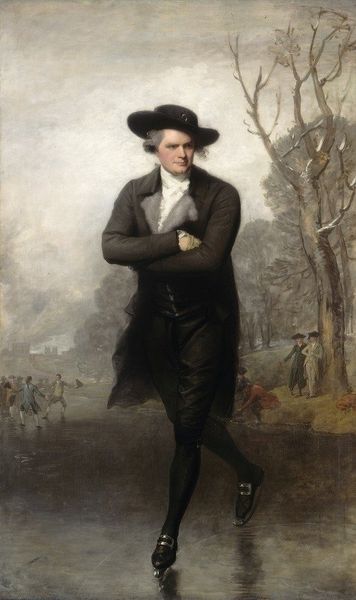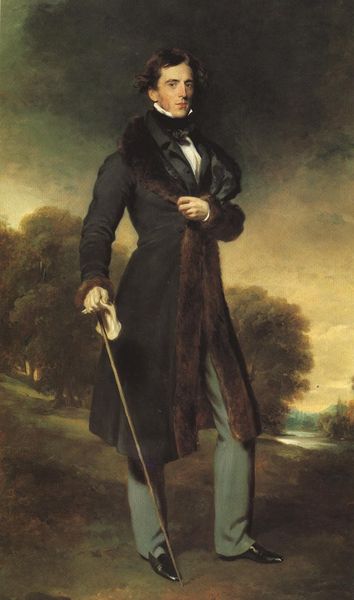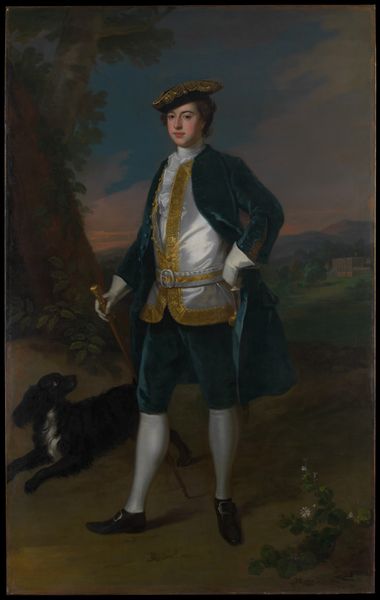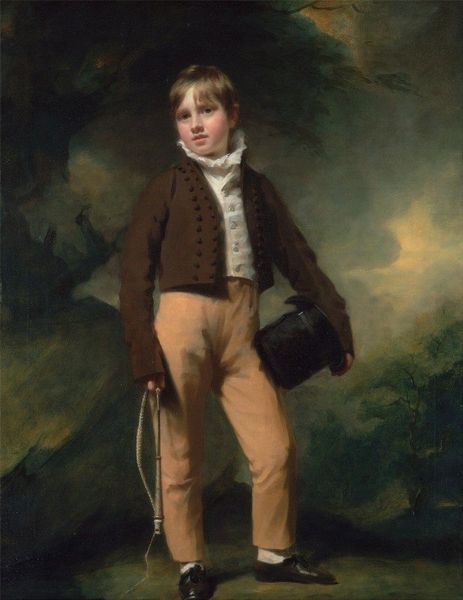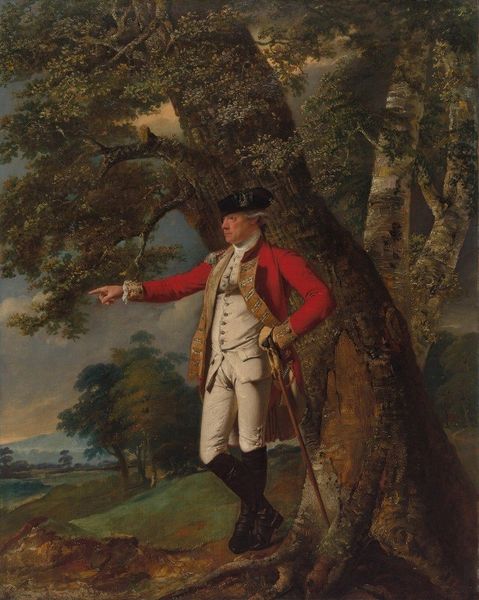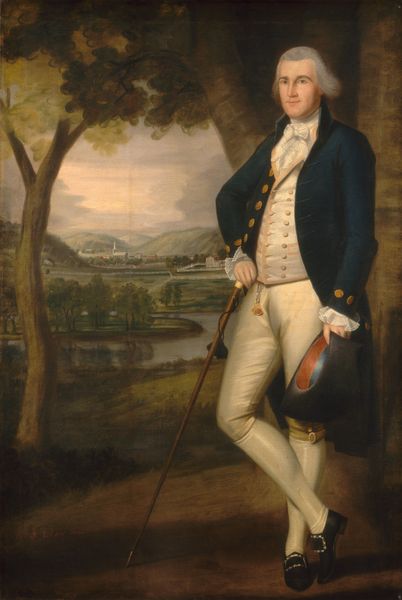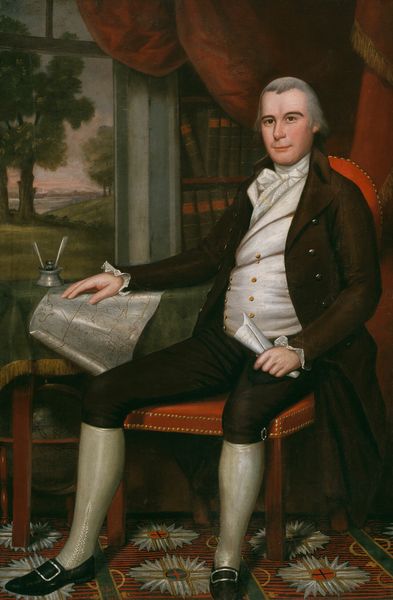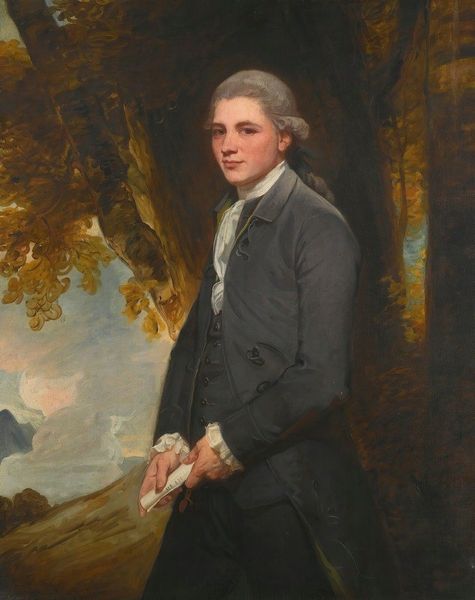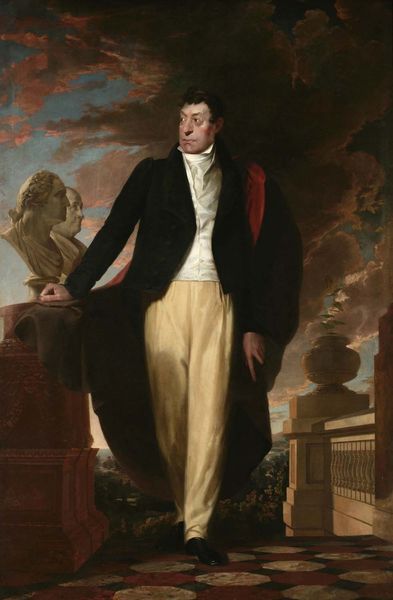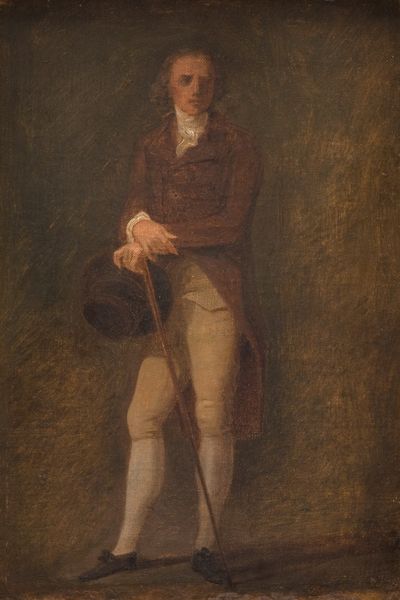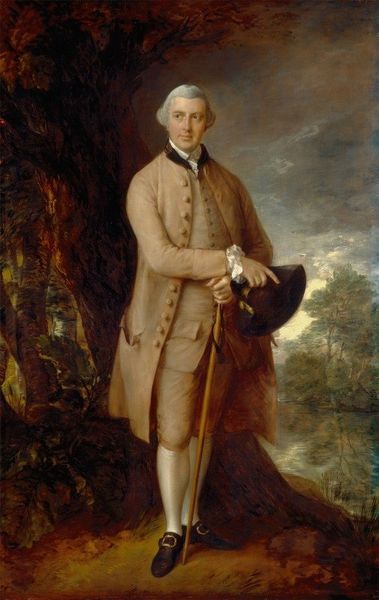
Dimensions: overall: 200.8 x 147.4 cm (79 1/16 x 58 1/16 in.) framed: 215 x 161.6 x 7.6 cm (84 5/8 x 63 5/8 x 3 in.)
Copyright: National Gallery of Art: CC0 1.0
Curator: Looking at this portrait, I’m immediately drawn to the stark color palette, mostly somber reds and earth tones offset by bright whites. It’s a peculiar combination. Editor: Indeed. This is Charles Willson Peale’s 1770 portrait of John Beale Bordley. What you're responding to reflects the fashions and aesthetic sensibilities of the period. Peale, having trained in London, presents Bordley in a manner befitting a gentleman of the Enlightenment. Curator: Absolutely, the pose, the somewhat classical landscape in the background, they are all very staged and deliberate. But let's consider those earth tones – it feels appropriate somehow, hinting at the grounded nature of a landowner, maybe? What was the process behind a piece like this? Editor: One imagines many sittings were required. As for the process, oil paint allows for layering and correction. You'll note the smooth application, suggesting careful grinding of pigments, control of oil mixtures to achieve these glazed effects. These materials had to be imported, demonstrating Bordley’s ability to engage in the material trade of artmaking. Curator: And let's not forget the propagandistic aspect. Notice the discarded papers at Bordley's feet, perhaps suggesting intellectual pursuits cast aside for more practical engagement. How does Peale craft this image to serve the societal standing of his sitter? Editor: It speaks to the active gentleman, attuned to both intellectual matters and practical affairs. His gesture directs our gaze outwards, towards the landscape, a clear statement of his dominion and stewardship of the land. He's an enlightened landowner, his wealth tied to productive work and virtuous control over nature. Curator: It is striking to note how wealth and intellectualism are conflated into a narrative so clearly communicated by attire, objects, and the carefully chosen background elements. I guess, in a way, the politics of identity play a crucial role here, much like today. Editor: Precisely. These objects and artistic conventions are not neutral; they’re carefully employed tools that speak volumes about power, taste, and societal ideals of the late 18th century. The canvas becomes a stage on which identity and aspiration are performed.
Comments
No comments
Be the first to comment and join the conversation on the ultimate creative platform.
